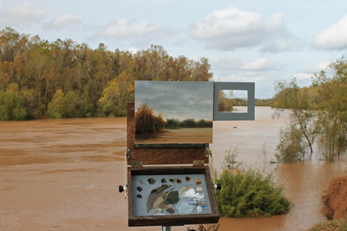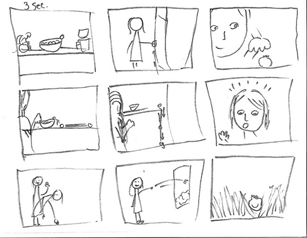Specialist Year 5 & 6 Learning from Home Weeks 1-3
Spanish
Spanish Explorers (History)
Learning intention:
We are learning to summarise information when viewing a digital text (Spanish Explorers)
Activity 1: This week, you are watching a video about Spanish explorers in order to write a short summary of an historical event. It is a video that is 30 minutes in duration. You will be using the information that you collect to write a short report.
Prior to watching the video, consider the following questions/ideas:
Spanish explorers were also known as “Conquistadores”. This word means ‘conquerers’.
What is the difference between an explorer and a conquerer?
How did the Spanish language spread from Spain to South America?
Do you already have some knowledge about Conquistadores?
Where did you learn about this?
What would you like to learn about this topic?
- Log into ClickView using your username and password.
- Watch the ClickView video on Spanish Explorers Click here
- As you are watching, take notes on key dates, names, countries and events that you consider important or interesting.
Consider using ‘who, what, when, where and why’ questions to guide your note-taking.
You are not writing down everything word for word- just the information that you think you will need to write a short summary after watching the video.
Activity 2: Write a summary about Spanish explorers
Using your notes from last week, write a brief summary about what you have learned. Be prepared to share this on your return to school!
Include your opinion about the following:
Do you agree or disagree with the motivations and actions of the Spanish explorers? Why or why not?
How do you think the explorers influenced how the world is today?
Were there any benefits for the original inhabitants of the countries that were explored? If so, what were they?
Can you think of any other instances in history where similar things have happened?
What was the most interesting thing that you learnt?
Have some of your pre-viewing questions not been answered? How can you find the answers?
Activity 3: Game show host!
You are responsible for writing some questions for a game show using the information that you have learned.
Step 1:
Create a set of question cards and write some questions about Spanish explorers and the countries they visited.
Step 2: Provide the answers on the back of the question cards.
Be creative! Think of some little-known facts that you think others might not remember or write some multiple-choice or true or false cards.
We will use these question cards for a class quiz when we return to school.
Music
Learning Intention:
We are learning to sing a part in a song.
We will be learning this song over the next 3 weeks.
Click here to be guided through the words to your verse on ClickView.
Year 6: Click here to learn the first verse (you will be singing this with Prep to help them out).
Art
Year 5
Learning Intention: We are learning to identify and describe how ideas are expressed in artworks by comparing artworks from different contemporary, historical and cultural contexts, including artworks by Aboriginal and Torres Strait Islander peoples.
Read about The Heidelberg School here and consider the collection of works by McCubbin, Streeton, Condor, Roberts and Sutherland. What is Plein Air ? Why did artists make these paintings so small? What are some things that might happen if you set up outside to paint? What were the impressionists trying to capture?
Make a small paper frame by folding a small rectangle in half and cutting out the middle.
Use this as a viewfinder to look outside and frame a portion of the landscape for an artwork.

Set up outside with some paper or a sketchbook on your lap and your viewfinder nearby. Paint or draw a quick sketch of the landscape capturing colours and shapes you can see inside the edges of your viewfinder.
Take a look at some contemporary Australian landscape paintings by Australian artists, Lin Onus, William Robinson and
Blak Douglas here.
Can you guess which two artists are indigenous?
Does their work have a message?
Have a discussion about these works with someone in your family.
Decide which painting you like best from all the Australian landscapes in these pages, and why.
Copy this one as best you can onto an A3 sheet. You can use paint or other mediums.
Consider what skills you might acquire from the artist in this way.
Please photograph your finished works and forward to the school for sharing to the LPS Learning from Home Gallery.
Year 6 Graduation Project
Learning Intention:
We are learning to select and apply visual conventions, materials, techniques, technologies and processes specific to different art forms when making artworks.
We are learning to create and display artwork considering how ideas can be expressed to an audience.
Because we will not be at school for part of this term, your Graduation Project has changed.
We will be contributing to a short stop motion animation video which will be accessible from home and will take most of Term 3 to complete. The final production of the collaborative works will be your gift of thanks to Laburnum Primary School as the class of 2020.
You are an exceptional group of students and this has been an amazing final year for you.
Let’s make an artwork to reflect your resilience and individuality, your imagination and sense of fun.
You will each make a collage character of yourself using a personal photo for your face, drawings and an old magazine or decorative papers for your body. Some examples for inspiration can be found here.
All your characters will each have 12-15 seconds of fame in the animation.
Make up a storyboard of what you would like your character to be doing in 9 simple drawings.
You can even use a stick figure for this if you like. Keep it simple.
Your character could be kicking a goal, falling from a height, running, jumping, skating or dancing, or anything else you can imagine.
Use arrows between your boxes to sequence the pictures.

Then take 2 photos of yourself in different positions and print or copy these so they fit an A5 sized page. You will need a few spares in case you want to make more or you make a mistake.
Cut the face or head out of all the photos (and cut off the arms and legs if you want to use these). Cut the shapes for your clothes, hair or accessories, out of a magazine or decorative papers.
Keep all the pieces in an envelope.
Then use the collage materials to build a two dimensional character of yourself on a piece of white paper. Use small amounts of blue tack so you can move parts of the body if needed. Set your character up to follow the movement in your storyboard as much as possible.
Take photos of your character in these 9 steps and email the photos to me as jpgs. Hang on to your collage material in the envelope, as they might be needed later.
You can also create the illusion of movement by photographing your character close up and further away.
Stay tuned for more tips and inspiration each week.
Library
Learning Intention:
We are learning to compare a book that has been made into a film.
Use your fabulous persuasive skills to convince your peers why the book is better than the film of the same story (or vice versa).
Think of all of the books that you know that have been made into films.
e.g. Harry Potter and the Philosopher’s Stone, The Cat in the Hat, Holes, Wonder, The Wizard of Oz.
Choose a book that has been made into a film and decide whether the film or book was better.
You can present your point of view in any way – e.g. poster, booklet, powerpoint presentation, video.
Points to consider:
Opening/Ending - Did they start/end the same way? Did you like the way they started/ended?
Characters - Did you like the characters in the film? Were they what you expected? Were the right actors chosen to play them?
Plot - Did the plot work better as a film or as the book? Did the story work well as a film?
Scenes - Were the scenes what you expected? Were the scenes the way you had imagined? Were any scenes left out?
Overall View - On the whole did you prefer the book or the film? Why?
© Copyright Laburnum Primary School
